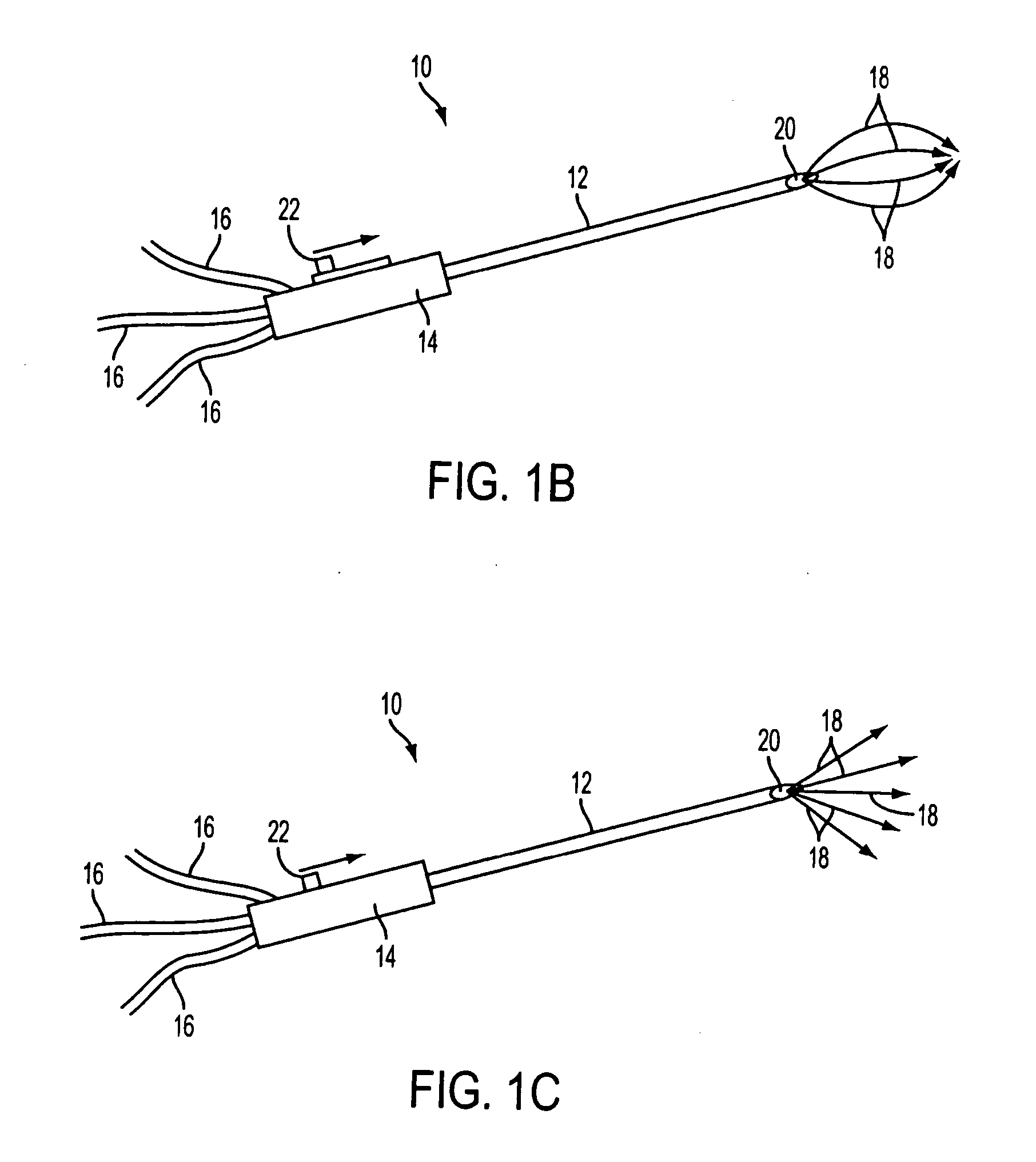Method for the pre-conditioning/fixation and treatment of diseases with heat activation/release with thermo-activated drugs and gene products
a technology of heat activation/release and gene products, which is applied in the direction of biocide, therapy, genetic material ingredients, etc., can solve the problems of ineffective cold spots in the treatment zone, limited area, and limited use of previous treatments, and achieve the effect of accurate treatment of diseased tissu
- Summary
- Abstract
- Description
- Claims
- Application Information
AI Technical Summary
Benefits of technology
Problems solved by technology
Method used
Image
Examples
example 1
Modeling of Heating
[0111] A. Phantom Study
[0112] To validate the computer models, a study in phantoms made of Agar (5%), NaCl (0.25%), Albumin (0.5%), and water was performed. These phantoms reproduce thermal and electrical tissue properties, and coagulate at 75° C. Phantoms were created with 2.5 cm diameter cylindrical holes approximating esophageal dimensions. The setup is shown in FIG. 13. After ablation, the phantom was sliced to determine dimensions of the coagulated regions.
[0113] A 90° C. electrode temperature was maintained for 2 minutes to obtain larger coagulation zones (clinically, 80-85° C. and 1 min are used). FIGS. 14 and 15 show coagulation zones (i.e., zones >75° C.) from these experiments. On average, the 75° C. boundary was ˜2 mm in diameter (FIG. 15).
[0114] B. Computer Models
[0115] Geometrically accurate models of the Stretta catheter needle (FIG. 16a, left) were created. The needle was inserted into tissue inside the simulated esophageal lumen (FIG. 16). The...
example 2
Testing Protocol
[0118] Three dosage levels are used that comprise a thermosensitive liposome prepared from DPPC, MSPC, and DSPE in a molar ratio of about 90:10:4. Doxorubicin is encapsulated within the liposomes. The three dose levels are about 20, 30, 40 mg / m2 doxorubicin. The thermosensitive liposome is infused over 30 minutes; the RF heating procedure begins approximately 15 minutes after start of the infusion.
[0119] The RF heating procedure is designed to create local tissue temperatures above 40° C. to a depth of at least 3 cm measured from the deepest portion of the tumor. Temperature is maintained below locally ablative temperatures. Under endoscopic guidance, the catheter is placed in the center of greatest tumor mass. As many of the catheter heating prongs as possible are deployed directly into the tumor.
[0120] This procedure is repeated at approximately 21 day intervals or as tolerated. Therapy continues unless: 1) there is a complete pathological response, 2) there are...
PUM
| Property | Measurement | Unit |
|---|---|---|
| temperature | aaaaa | aaaaa |
| temperature | aaaaa | aaaaa |
| temperature | aaaaa | aaaaa |
Abstract
Description
Claims
Application Information
 Login to View More
Login to View More - R&D
- Intellectual Property
- Life Sciences
- Materials
- Tech Scout
- Unparalleled Data Quality
- Higher Quality Content
- 60% Fewer Hallucinations
Browse by: Latest US Patents, China's latest patents, Technical Efficacy Thesaurus, Application Domain, Technology Topic, Popular Technical Reports.
© 2025 PatSnap. All rights reserved.Legal|Privacy policy|Modern Slavery Act Transparency Statement|Sitemap|About US| Contact US: help@patsnap.com



